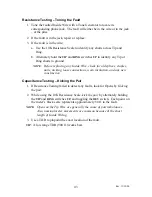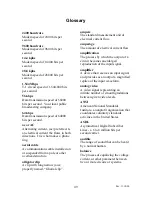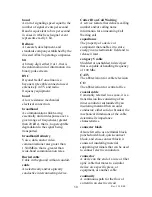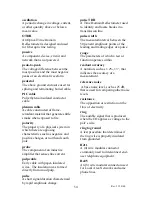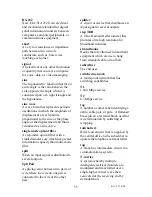
Rev. 11/10/00
47
Q.
Can the Sidekick be used to check Hi-Cap (ISDN, T-1, DSL, etc.) service
lines?
A.
Yes. However, unlike a POTS line, high-capacity lines
MUST BE OUT OF
SERVICE
before testing with a Sidekick. In most cases, Stress Test readings
below 20 dBrnC should be attainable. A Stress Test reading over 20 dBrnC
may indicate that the line is inducing more bit errors than desired.
Q
. Why does the Sidekick’s Stress Test identify problems that other test sets
miss?
A
. The Sidekick’s Stress Test is a patented process that places both DC voltage
(about 135 Vdc) and a 90 dBrnC noise signal on each wire in a pair as a
reference to ground. The noise signal waves oppose each other (180
°
) as they
travel through the pair causing them to cancel each other out. Any imbalance
in the pair causes the signal level to rise; and this reading, in dBrnC, is
reflected on the meter. Refer to the Operating Manual for acceptable Stress
Test signal levels.
Q.
Is the Stress Test alone sufficient to certify a pair as good?
A.
No. Accepted practice requires running the following tests in the following
order: AC volts, DC volts, Stress, Leakage, then return to Stress. If these
tests read good, then the circuit is good. If you are using a Sidekick T&N,
you should run the Circuit Noise, Power Influence, Loop Current, and Circuit
Loss tests.
Q.
When I run the Leakage Test, the needle jumps past midscale then drops
slowly to the left. What causes the meter to act this way?
A.
You are most likely reading into a NTID or CO circuit protector. Be sure that
the CO and the customer ends are disconnected and the pair is open when
running the Leakage Test. Unlike the Loop Resistance Test, the Leakage Test
is looking to detect a leak in the insulation’s resistance. If equipment is
connected at the opposite end of the pair, the meter reads through the
equipment and not the insulation. This causes the false reading.
Q.
Is a Stress Test reading of 20 dBrnC acceptable on inside wiring?
A.
No. Most inside wiring configurations are less than 1,000 feet. Because the
Stress Test is designed for a local loop that can be miles in length, the reading
for a very short run, such as in your typical residence, will be considerably
less. Refer to the Inside Wiring section of your Sidekick manual for
acceptable Stress Test readings.











